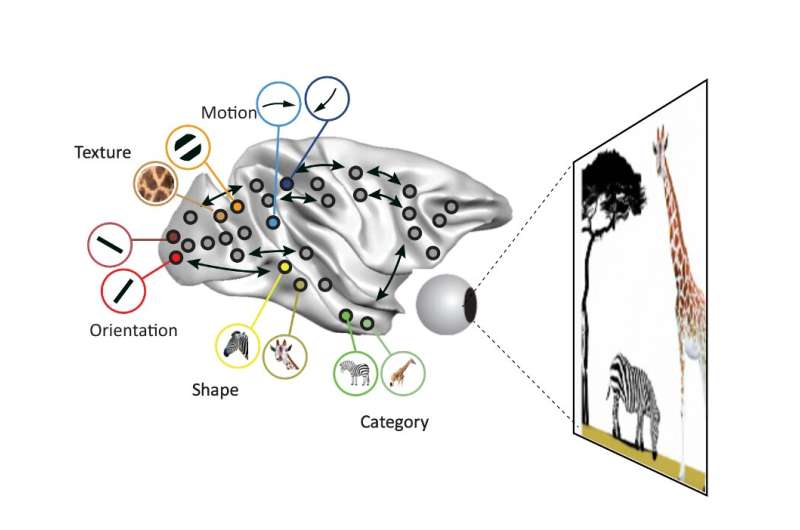monopril zdravilo

When we look at something, the different properties of the image are processed in different brain regions. But how does our brain make a coherent image out of such a fragmented representation? A new review by Pieter Roelfsema sheds light on two existing hypotheses in the field.
When we open our eyes, we immediately see what is there. The efficiency of our vision is a remarkable achievement of evolution. The introspective ease with which we perceive our visual surroundings masks the sophisticated machinery in our brain that supports visual perception. The image that we see is rapidly analyzed by a complex hierarchy of cortical and subcortical brain regions.
Hierarchy of our visual system
Neurons in low level brain regions extract basic features such as line orientation, depth and the color of local image elements. They send the information to several mid-level brain areas. Neurons in these areas code for other features, such as motion direction, color and shape fragments.
Neurons in mid-level areas send the information to yet higher levels for an even more abstract analysis of the visual scene. Neurons at these higher levels code for the category of objects and even for the identity of specific individuals. Hence, every visual object activates a complex representation that is carried by a large set of neurons across many brain regions.
An important question is how the distributed and fragmented representations of objects across many areas of the visual brain can lead to a unified perception of objects against a background. This review focuses on this so-called “binding problem.”
The binding problem occurs if there are multiple objects. Each of the objects activates a pattern of neurons across many brain regions and in such a representation it may not evident which features belong to one of the objects and which ones belong to the others. Which process glues the features into coherent object representations?
The synchronization theory turns out to be wrong
Pieter Roelfsema says, depo provera lose weight “When we process visual information, our cells only look at a small section of the overall picture. You get a palette of cells all focusing on different fragments. There is not one cell where this information comes together. It was previously thought that synchronization of the cells was important to solve the binding problem.”
“It was thought that cells coding features of the same object synchronize their activity in a rhythm. The cells coding for features of another object would then synchronize in a different rhythm. Many scientists have invested time and energy into this theory, but we now know that it works differently.”
“It turns out that we focus our attention on one object at a time. These neurons that code for features of the attended object do not need to synchronize, but their activity increases. It is possible to observe several objects at the same time, but determining which properties belong to one of the objects requires attention.”
“When there are multiple objects on the table, we are often not actively concerned with which properties belong to which object. However, when we want to grasp one of the things, we direct our attention on that object and only then the grouping of image properties becomes relevant.”
“The binding problem is therefore not solved by synchronization, but by increased firing of the cells. Many scientists still believe in the synchronization theory, while we have known for years that it is incorrect. This new review lists the evidence for and against the two binding theories.”
The paper is published in the journal Neuron.
More information:
Pieter R. Roelfsema, Solving the binding problem: assemblies form when neurons enhance their firing rate they don’t need to oscillate or synchronize, Neuron (2023). DOI: 10.1016/j.neuron.2023.03.016. www.cell.com/neuron/fulltext/S0896-6273(23)00212-X
Journal information:
Neuron
Source: Read Full Article
